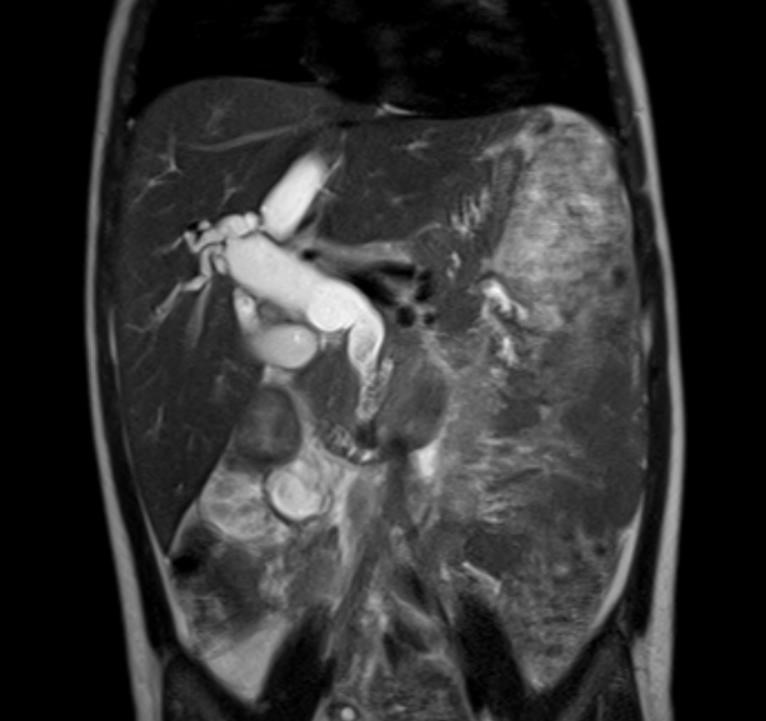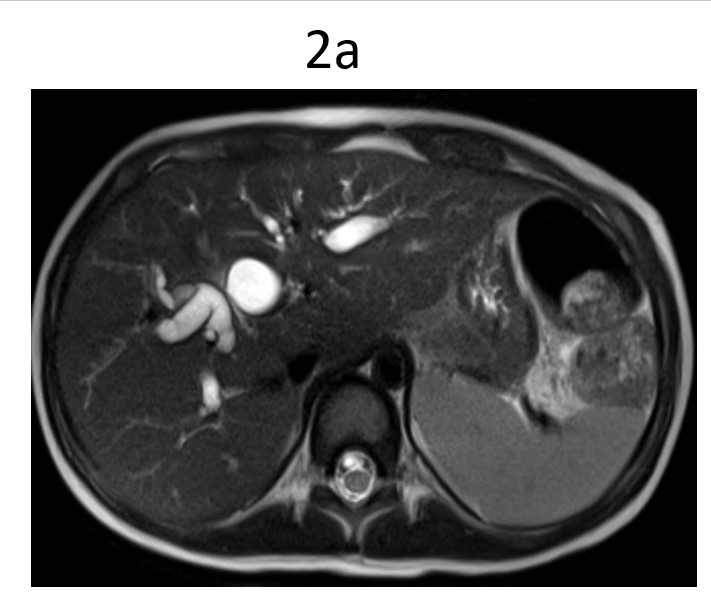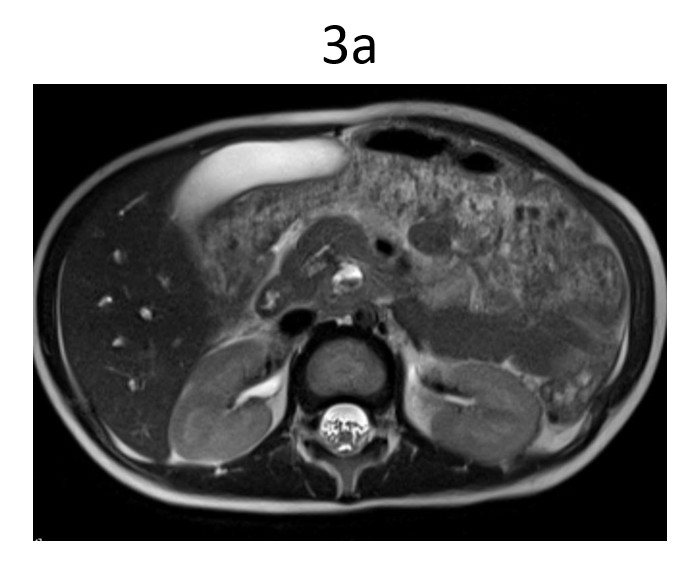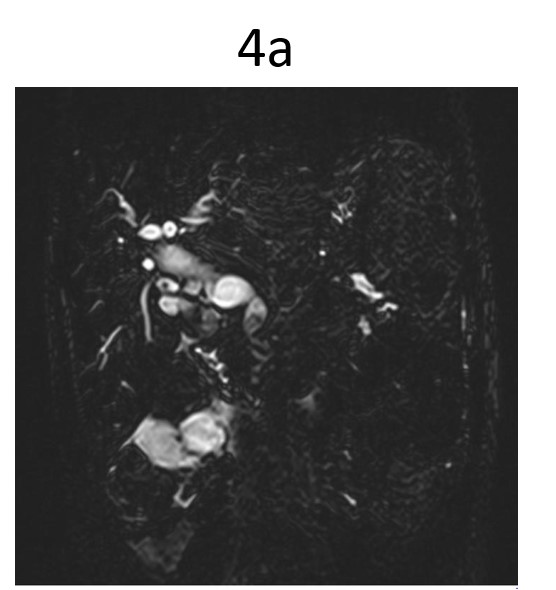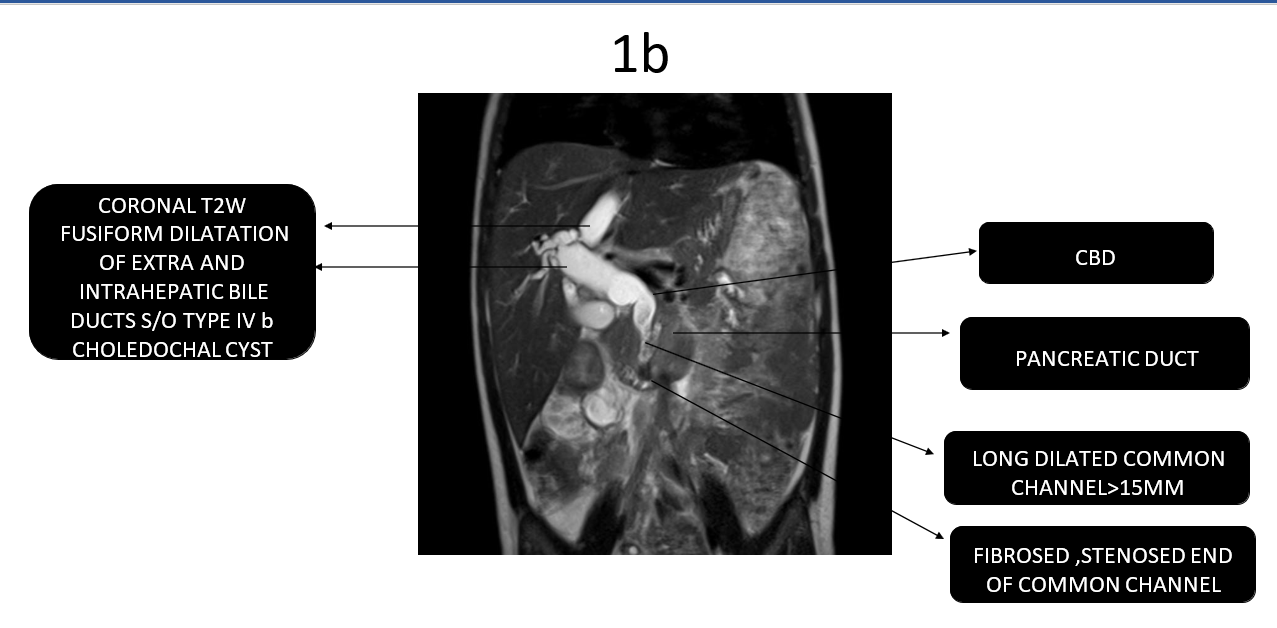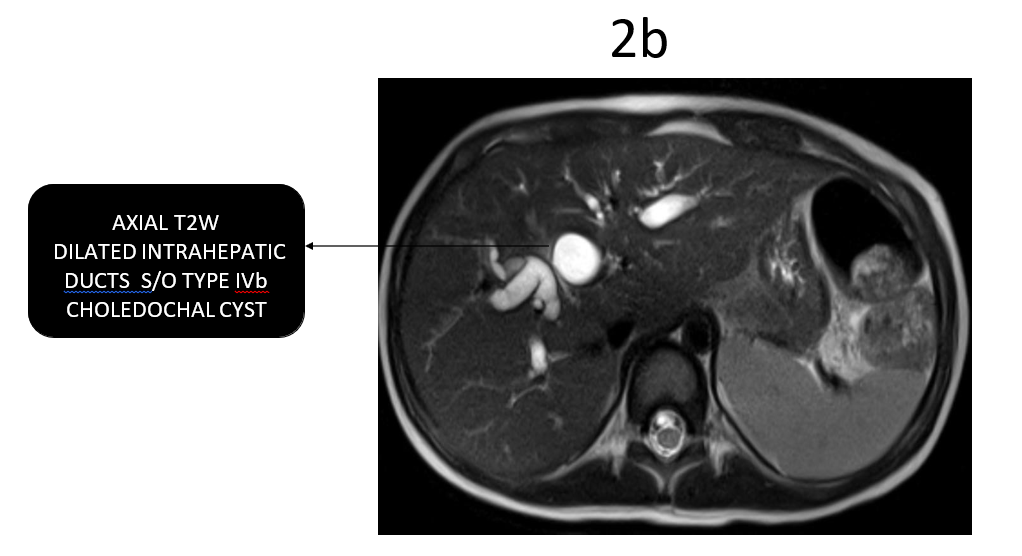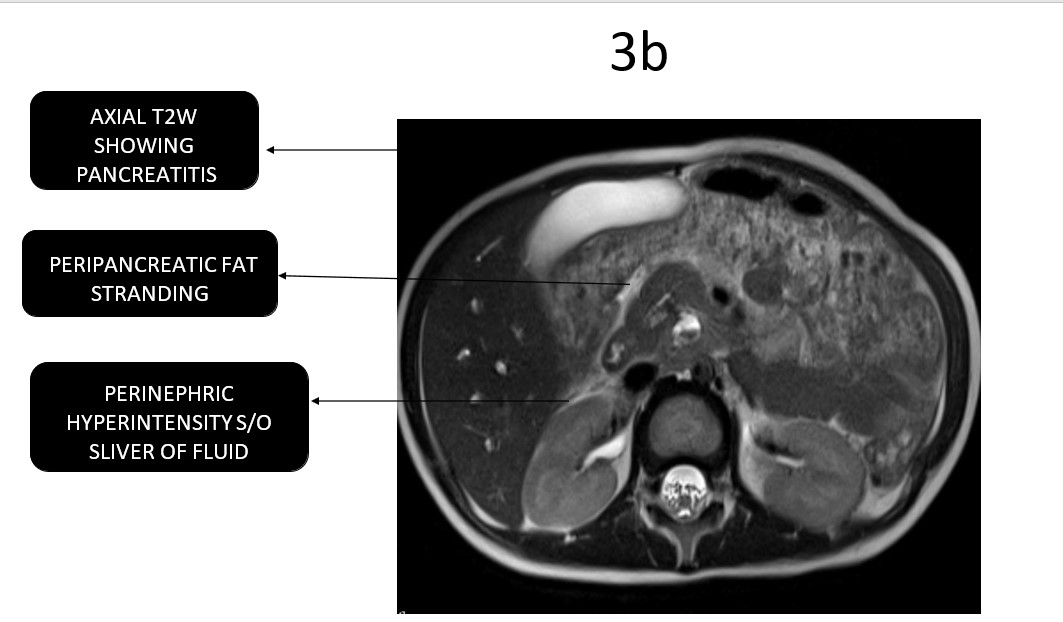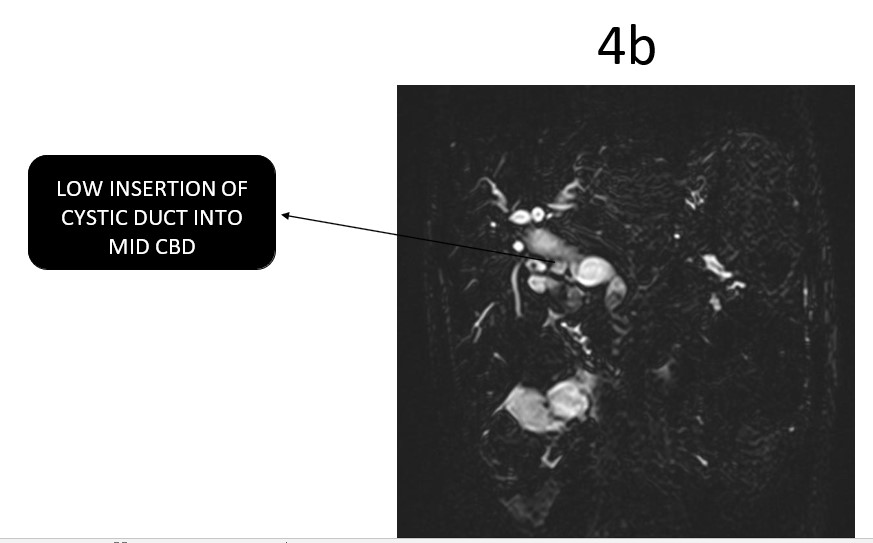2 year old girl child presents with abdominal pain and fever.
2 year 2-year-old girl child presents with abdominal pain and fever. old girl child presents with abdominal pain and fever.
- Fusiform dilatation of both intrahepatic biliary radicles and common bile duct consistent with type 4b choledochal cyst.
- An anomalous junction of common bile duct and pancreatic duct outside the duodenal wall to form a long common channel measuring 16 mm in length suggestive of pancreaticobiliary maljunction(Type D).
- Terminal circumferential stenosis of long common channel with sludge.
- Mildly bulky pancreas,dilated MPD (3mm),sludge seen in distal pancreatic duct and long common channel,mild peripancreatic fluid extending along right anterior pararenal space –features suggestive of pancreatitis
- Elongated gall bladder with low posterior insertion of cystic duct into middle third of common bile duct.
So, overall findings are Type 4b choledochal cyst with pancreaticobiliary maljunction typeD
DIAGNOSIS:
Type 4b choledochal cyst with Type D pancreaticobiliary maljunction, bile duct calculi, and biliary pancreatitis
DISCUSSION:
- An anomalous pancreaticobiliary junction also known as pancreaticobiliary maljunction describes an anomalous junction of the pancreatic duct and common bile duct that occurs outside the duodenal wall to form long common channel (>15 mm).
- More common in Asians1 , F>M 2
- Associations –
- Choledochal cyst- mainly Todani type 1a,1c and 4a
- Bile duct stricture –affecting the distal duct or hilar duct
- Pancreatic anomalies- Annular pancreas , Pancreas divisum
- Synchronous biliary cancer 1,2
- Clinical presentation- Abdominal pain, vomiting,fever, jaundice 2
- Classification3 – Japanese study group on pancreaticobiliary maljunction classification 2015
- TYPE A(stenotic type)-dilatation of common bile duct upstream of a stenotic segment of distal common bile duct which joins the common channel.

- Type B (Non stenotic type)-Non stenotic distal common bile duct smoothly joins a common channel, no localized dilatation of common channel.

- Type C (Dilated channel type)-Narrow distal common bile duct joins dilated common channel.

- Type D(Complex type)-Complex maljunction associated with annular pancreas ,pancreas divisum

Radiographic features
- ERCP- An intrabiliary amylase level greater than 8000IU/ml within bile duct or gall bladder obtained endoscopically suggests reflux of pancreatic juice through an anomalous pancreatico biliary junction.1
- CT/MRI- A common channel >15mm,abnormal union between pancreatic and bile duct,pancreatico biliary junction outside duodenal wall,common bile duct dilatation suggestive of pancreaticobiliary maljunction with biliary dilatation.
- Complications:-
- Pancreatitis –more common in children
- Biliary stones
- Cholangitis
- Biliary tract carcinoma
References:
- Ragot E,Mabrut JY,Quaissi M et al.Pancreaticobiliary malfunction in European patients with bile duct cysts: Results of a multicenter study of the French surgical association (AFC). (2017)World Journal of Surgery,41(2):538-545
- Morine Y, Shimada M, Takamatsu H, et al . Clinical features of pancreaticobiliary malfunction: update analysis of second Japan nationwide survey.(2013)Journal of hepato-biliary-pancreatic sciences.2015:472-486
- Naoto Urushihara, Yoshinori Hamada, Terumi Kamisawa, et al –Classification of pancreaticobiliary malfunction and clinical features in children .(2017)Journal of Hepatobiliary –Pancreatic Sciences.24(8).
Dr. Shashwat Priyadarshi
DNB, Cross sectional Fellow
Dr Sunita Gopalan,
DMRD, FRCR
Senior Consultant Radiologist
Manipal Hospitals Radiology Group.

